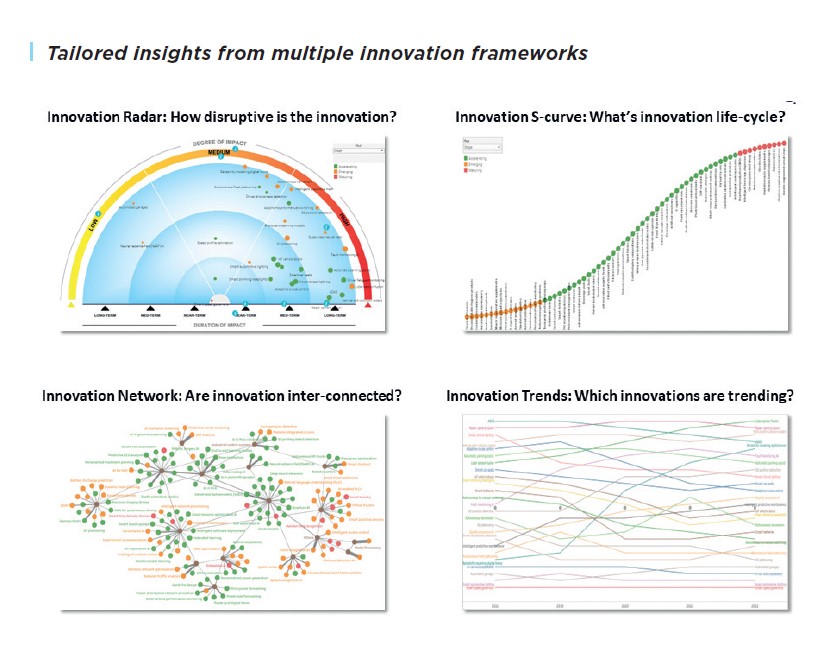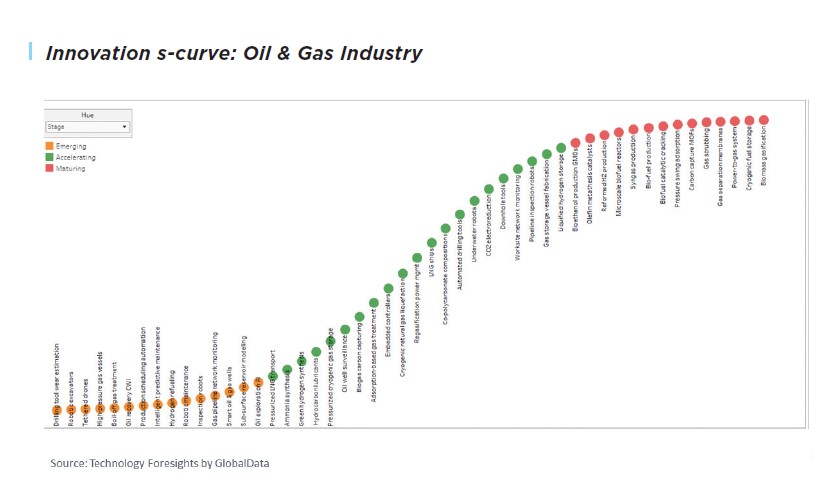Machine learning, large language models (LLM), and artificial intelligence (AI) together represent the most potentially transformative innovation of the current age. There is constantly a new service or industrial process that may be upended by the new technology. It only makes sense then that AI is starting to change how individuals identify and navigate innovation itself.
Fugitive Emissions Journal had the pleasure of speaking with Sourabh Nyalkalkar, Practice Head at GlobalData Plc, to discuss how their algorithms and proprietary data sets are helping industrial players identify innovative partners and solutions. Discussed are the benefits of AI, the Innovation S-curve, and how predictive maintenance is the next big thing for industry and infrastructure.
By Justin Yule
Driving Industry Solutions
Nyalkalkar, a graduate of the Indian Institute of Management, has spent the last four years at the London-based GlobalData Plc. He now works to connect clients with the innovative solutions and partnerships they need to get ahead. “My job primarily involves using all the data sets that we have to give some sort of innovation intelligence to our clients,” said Nyalkalkar. The solutions GlobalData offers can be broken into two key aspects. The first aspect is a fine-grain assessment of the state of the chosen industry, using proprietary data sets and algorithms to give an up-to-date characterization of their sector and competitors. The second aspect is the identification of potential partners or vendors for collaboration and solution building. In sum, GlobalData helps its clients identify the right moment for investment, the best innovations to be leveraged, and the best partners to do it with.

The principles behind the service are sound. “Innovation is typically an early sign of disruption in any industry. Whenever or wherever we see a lot of innovation happening in an industry, it is likely getting increasingly disrupted, and that means new players, new investment, more jobs, and more,” continued Nyalkalkar. Nyalkalkar and his team help clients identify promising solutions and opportunities by using an ‘evidence-based methodology’; they capture data about new patents, investments, hiring trends, and social media activity, synthesizing it in a targeted way that offers CIO and CSO teams an up to date 360° view of their sector and competitors. “Suppose there is a large EPC company in Germany, and they want to know what ABB or Siemens is doing. We give them a holistic view of how exactly ABB or Siemens is approaching certain problems, and what kind of solutions are they coming up with now, as well as what kind of solutions are they likely to come up in the future.”

Utilizing Artificial Intelligence and Data Sets
The captured data is processed by machine learning algorithms to identify what solution is being offered and where it could be applied. Patent data is assessed for the purpose and applicability of investment data are analyzed to identify where the momentum lies, and social media is surveyed for projects generating buzz. Analysts then tirelessly curate these innovation stories, seeking the best way to articulate to the client the possible benefits of these solutions, and what impact they could have in the sector broadly. Nyalkalkar said, “Initially we had our team of analysts here do a lot of data crunching themselves. But over the last two or three years, we have adopted many generative AI solutions and large language models internally, which is helping us speed up the delivery of these solutions. It is at the same time helping us improve the quality.”
AI has been used to take better advantage of their proprietary data sets in crafting tailored insights for clients. “What are the different use cases of a certain solution? What kind of partnerships have happened recently? What is the market potential of this technology? What kind of startups are there? We are getting answers to these questions in seconds, and we can validate with sources the information that is provided to give the client confidence in their next steps.” The output is a wealth of innovation intelligence that has endless utility. Manufacturers can use this analysis to improve their line of products, investors can see where the best opportunities lie, and end-users can determine the best solutions on offer, in addition to discovering new and emerging opportunities and innovations.

Providing Foresight — Innovation S-Curve
The company provides clients with an intuitive user interface that communicates the maturity level of an innovation, allowing them to judge risk and opportunity. Nyalkalkar’s team determines maturity on a sliding scale, allowing for example, a potential end-user to pick out those technologies that are already fully commercialized and available from vendors, while empowering manufacturers and investors to pick out those solutions that are still being tested and piloted. Clients are thus able to track and anticipate maturation, timing their actions effectively. In a sense, GlobalData provides its clients with innovation foresight. This is a redeployment of the widely studied innovation S-curve, a theoretical framework for understanding and navigating the lifespan of innovation in a wider technological context. Helping clients identify the precise moment a piece of technology sits at the cutting edge is extremely valuable.
Nyalkalkar shared that a current innovation looming large over the horizon is predictive maintenance. Whether it is Shell, Rockwell, GE, FANUC, or small start-ups like the Massachusetts-based Sensata Technologies and Falkonry in Silicon Valley, a vast array of players are innovating in intelligent predictive maintenance for use on valves, gas production equipment, rotary assets, and mining equipment, and more, promising to save end-users serious time and money. Nyalkalkar outlines how the device captures time series data from sensors attached to a given machine and compares it with historical data to see if there are any patterns which resemble anomalies in the machine, giving a predictive sense of whether the machine will require maintenance.

Understanding the Future of Predictive Maintenance
“Our model is telling us that this is a very high-impact innovation, likely to significantly affect the industry for the long term. The trends are clearly showing there is a lot of activity happening. As of 2022, 30 new companies have created new solutions in predictive maintenance, and the trend has been consistently rising for the past few years, suggesting that this industry is getting more competitive.” Additionally, Nyalkalkar pointed out robotic maintenance and cryogenic fuel storage in the Oil and Gas sector as developments to watch.
Reflecting on the future of industry innovation, Nyalkalkar joined the chorus of those pointing to AI as the way of the future, but he does so with hard data to back himself. He points to Saudi Aramco investing USD $8 billion in AI in the last three years, with a 20% CAGR, as an unmistakable indicator of the reality of the AI hype. “I think there is going to be a surge in partnerships, mergers, and acquisitions in this space. The adoption is not unilateral; they are not just looking to use it for maintenance activities. We have seen through our radar they are trying to use it for oil exploration, for subsea modeling, as well as more novel uses like sensing the health of the employees,” he concluded.


